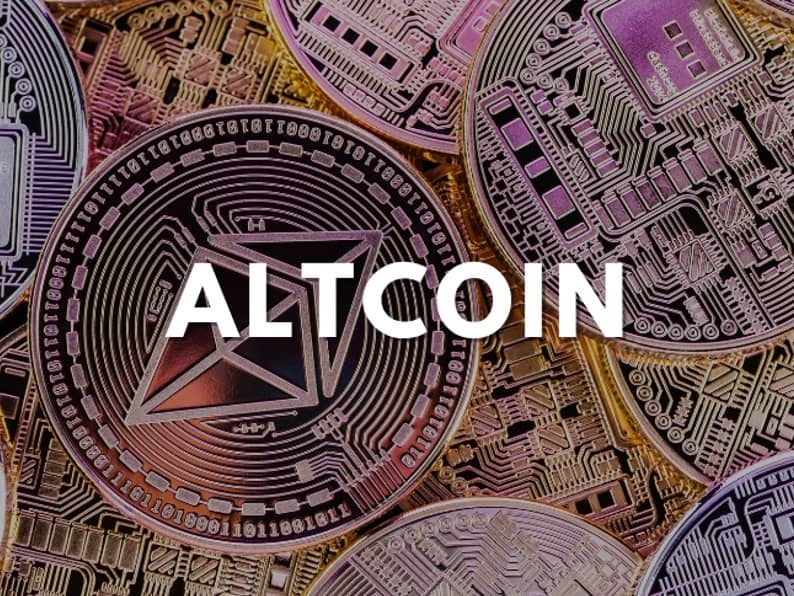위키 구독하기
Share wiki
Bookmark
Altcoin
에이전트 토큰화 플랫폼 (ATP):에이전트 개발 키트(ADK)로 자율 에이전트 구축
Altcoin
알트코인(alternative coin)은 최초의 암호화폐인 비트코인 (2008년 10월) 이후에 만들어진 모든 암호화폐를 가리키는 용어입니다. 이 이름은 비트코인과 기존의 법정화폐에 대한 대안이라는 사실에서 유래했습니다. [1][3]
역사
첫 번째 알트코인은 2011년에 등장했으며, 그 이후로 수많은 알트코인이 만들어졌습니다. 초기 알트코인들은 비트코인의 거래 속도 및 에너지 효율성과 같은 측면을 개선하려는 목표를 가지고 있었습니다. 현재 알트코인은 개발자의 목표에 따라 다양한 기능을 제공합니다. [8]
알트코인 역사의 주요 순간들을 간략하게 정리한 연표는 다음과 같습니다.
네임코인 (2011)
2011년 4월에 출시된 네임코인은 최초의 알트코인으로, 분산형 도메인 네임 시스템(DNS)을 제공하는 것을 목표로 했습니다. 머지 마이닝이라는 개념을 도입하여 채굴자들이 네임코인과 비트코인을 동시에 채굴할 수 있도록 했습니다. [5]
라이트코인 (2011)
찰리 리가 2011년 10월에 만든 라이트코인은 더 빠른 블록 생성 시간과 다른 해싱 알고리즘(Scrypt)을 사용하는 비트코인의 "라이트" 버전으로 설계되었습니다. 피어투피어 암호화폐로 인기를 얻었으며 새로운 기술을 구현하기 위한 테스트베드 역할을 했습니다. [12]
피어코인 (2012)
써니 킹과 스콧 나달이 2012년 8월에 소개한 피어코인은 비트코인 채굴과 관련된 환경 문제를 해결하기 위해 고안된 지분 증명(PoS) 합의 메커니즘으로 주목받았습니다. 피어코인은 작업 증명(PoW)과 PoS를 모두 결합했습니다. [14]
리플 (2012)
2012년에 처음 출시된 리플은 분산형 결제 프로토콜, 통화 교환 및 송금 시스템을 제공하는 것을 목표로 했습니다. 다른 많은 암호화폐와 달리 리플의 XRP는 사전 채굴되었으며, 네트워크는 고유한 합의 알고리즘을 사용했습니다. [2]
도지코인 (2013)
인기 있는 "도지" 인터넷 밈을 기반으로 한 도지코인은 2013년 12월 빌리 마커스와 잭슨 팔머에 의해 만들어졌습니다. 처음에는 농담으로 시작되었지만, 도지코인은 지지하는 커뮤니티를 얻었고 자선 활동으로 알려지게 되었습니다. [19]
다크코인 (대시) (2014)
2014년 1월 Xcoin으로 출시된 후 Darkcoin으로, 그리고 대시로 이름이 바뀐 이 암호화폐는 개인 정보 보호 및 익명성 기능에 중점을 두었습니다. 대시는 채굴자와 마스터노드로 구성된 2단계 네트워크라는 개념을 도입했습니다. [4]
이더리움 (2015)
비탈릭 부테린이 2015년 7월에 출시한 이더리움은 스마트 계약과 분산형 애플리케이션(DApps)을 도입했습니다. 그 자체 암호화폐인 이더(ETH)는 DeFi 분야와 ICO(Initial Coin Offering)를 통한 토큰 생성에 널리 사용되었습니다. [9]
모네로 (2014)
2014년 4월에 만들어진 모네로는 링 시그니처, 기밀 거래 및 스텔스 주소를 사용하여 개인 정보 보호 및 대체 가능성을 향상시키는 개인 정보 보호 중심의 암호화폐입니다. [10]
EOS, NEO 및 기타 (2017)
2017년에는 EOS와 NEO를 포함하여 새로운 알트코인과 블록체인 프로젝트가 급증했습니다. 이러한 플랫폼은 확장성 및 프로그래밍 가능성 문제를 해결하고 이더리움에 대한 대안을 제공하는 것을 목표로 했습니다. [6]
ICO 붐 (2017)
2017년에는 새로운 프로젝트가 토큰을 발행하는 자금 조달 방법인 ICO(Initial Coin Offering)가 크게 증가했습니다. 이로 인해 수많은 알트코인이 만들어졌고, 그중 일부는 널리 주목받고 투자가 이루어졌습니다. [10]
잘못된 내용이 있나요?
